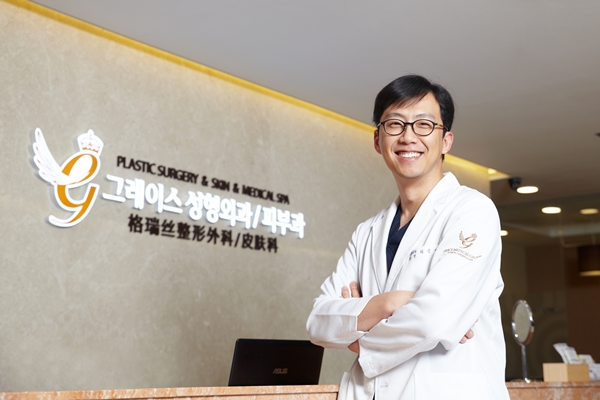Dr. Choi Moonseop of Grace Aesthetic Surgery Clinic

“The main concept of plastic surgery will move toward healing in 2015.”
The main goal of cosmetic surgery in the past few years may have been ‘survival of the fittest’ where the most beautiful would be promised success and love. However, the dynamics are changing. As more women are choosing a successful career over marriage, they are making up the majority of clientele for cosmetic procedures. I am not saying that we do not see younger patients. It’s just that the most popular procedures are changing. The focus of attractiveness is switching from the face to the entire body. Liposuction and breast augmentation are becoming popular and eye and nose surgeries are on the decline. Anti-aging procedures are always the most popular. In the past year, the number of patients wanting a thread lift has drastically increased.
[Advertisement] MAGNUM(Q-switched Nd:YAG Laser) – Manufacturer: (www.i-dana.com)]
Plastic surgery for healing
In Korea, people with unnatural outcomes of plastic surgery are derogatively called ‘surgical twins’ or ‘surgical monsters.’ These terms refer to the uniform and unnatural facial appearances that do not consider individual characteristics. These terms came into being since the recent development of procedures that change the facial bone structure such as bimaxillary surgery. However, these faces look awkward and even strange. Due to the social trend for deriding these victims of plastic surgery, patients nowadays desire a more natural appearance from plastic surgery. Instead of a completely new face, they just want to correct their flaw while conserving their original looks as much as possible. I believe the trends are moving toward a healing aspect of plastic surgery.
This also means shying away from drastic procedures that change the bone structure or major resection. Patients prefer simple procedures. Many less invasive procedures have been developed to replace surgery. For example, the eye shape correction that once could only be performed using incision, or face lift have been replaced by less invasive methods that bring similar outcomes.
However, one must be cautious in choosing these mild alternatives. Patients may not be satisfied with the results if people around them do not notice any changes. We place great importance to the consultation phase to prevent misguided interpretation of the results. We perform three consultations; before deciding on surgery, right before surgery, and in the operation room while markings are being made. We also make sure that only the doctors that have led the patient through these consultations perform the surgery.
-To be continued-




















